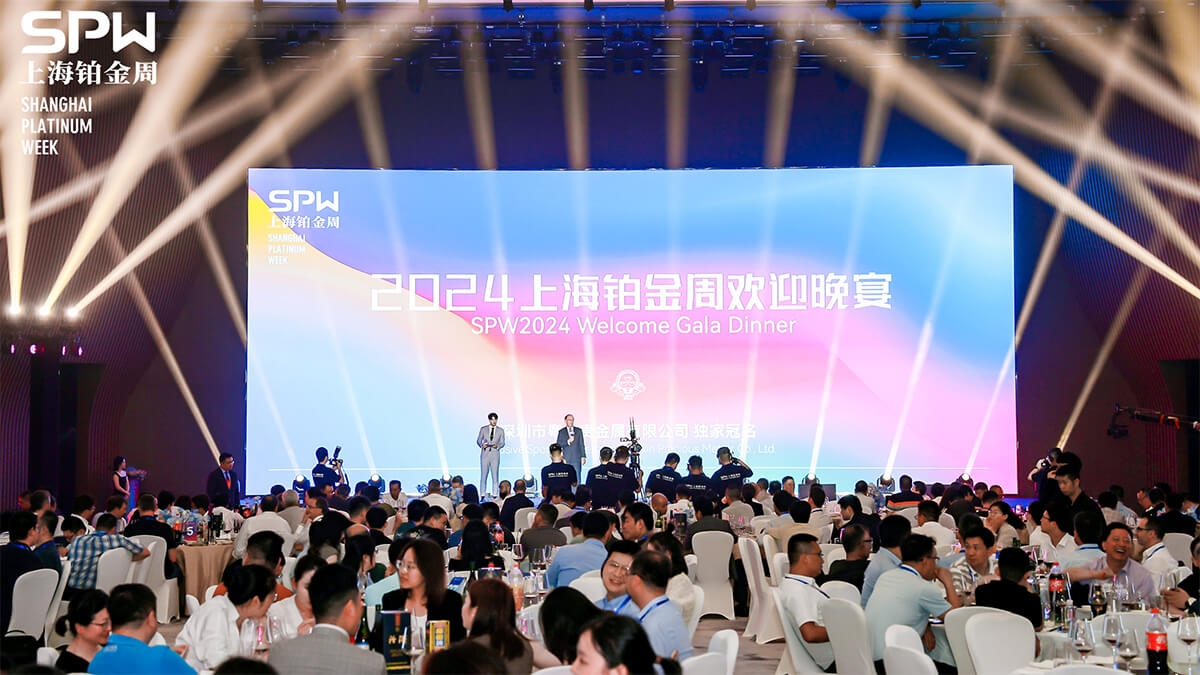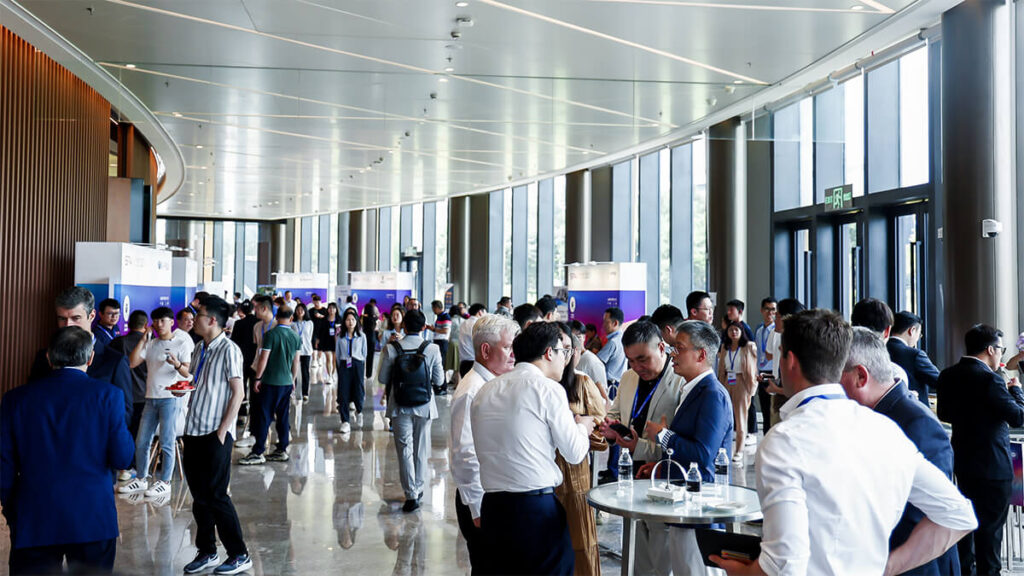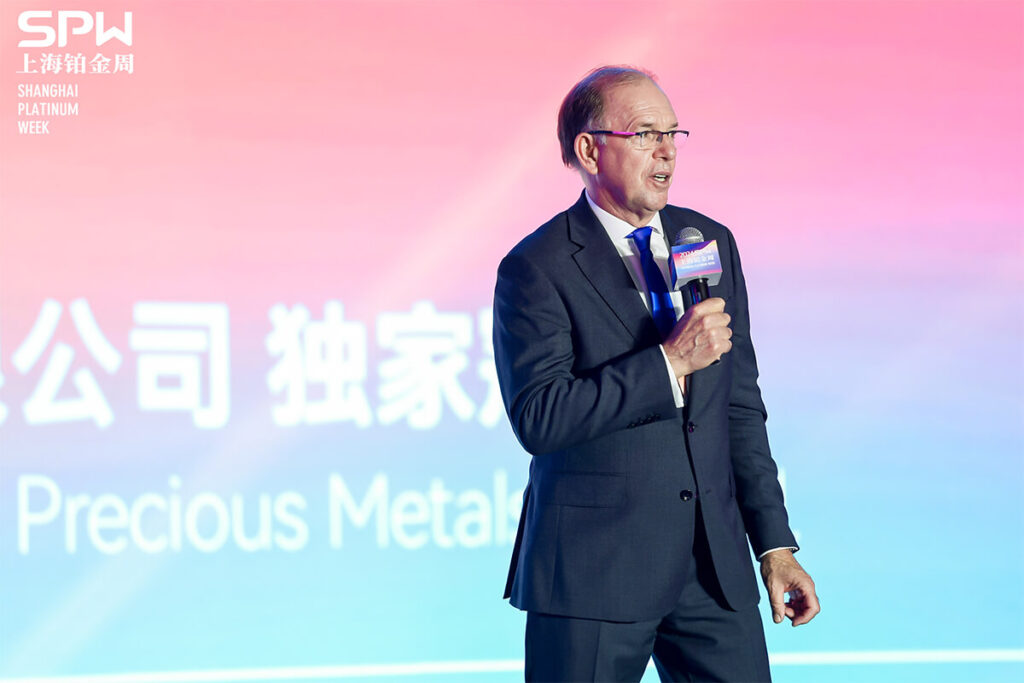Navigate
Article List
- 2024 ASIA PACIFIC PRECIOUS METALS CONFERENCE SUMMARY
By Joni Teves, Chief Precious Metals Strategist, UBS Investment Bank
- An Overview of Selected Singapore Legislation Applicable to the Gold Market
By Leong Yi-Ming, Partner, Allen & Gledhill LLP
- Unveiling The Reserve at APPMC 2024
By The Reserve
- The Perth Mint – Celebrating 125 Golden Years
By Sawan Tanna, Treasurer, The Perth Mint
- SINGAPORE’S RISE AS ASIA’S GOLD HUB
By Koh Guan Ho & Lee Liang Le, Analysts, Kallanish Index Services
- Shanghai Platinum Week 2024: China’s PGM Future Takes Flight with Innovation & Collaboration
By Edward Streck, Director of Research, WPIC
- SBMA News
By SBMA
Article List
- 2024 ASIA PACIFIC PRECIOUS METALS CONFERENCE SUMMARY
By Joni Teves, Chief Precious Metals Strategist, UBS Investment Bank
- An Overview of Selected Singapore Legislation Applicable to the Gold Market
By Leong Yi-Ming, Partner, Allen & Gledhill LLP
- Unveiling The Reserve at APPMC 2024
By The Reserve
- The Perth Mint – Celebrating 125 Golden Years
By Sawan Tanna, Treasurer, The Perth Mint
- SINGAPORE’S RISE AS ASIA’S GOLD HUB
By Koh Guan Ho & Lee Liang Le, Analysts, Kallanish Index Services
- Shanghai Platinum Week 2024: China’s PGM Future Takes Flight with Innovation & Collaboration
By Edward Streck, Director of Research, WPIC
- SBMA News
By SBMA
SHANGHAI PLATINUM WEEK 2024: CHINA’S PGM FUTURE TAKES FLIGHT WITH INNOVATION & COLLABORATION
By EDWARD STERCK, Director of Research, WPIC

The fourth annual Shanghai Platinum Week (SPW), co-organised by the World Platinum Investment Council (WPIC), Anglo American plc, China Gold Association, and the China Precious Metals Industrial Committee, took place between 9 and 11 July 2024.

This year, SPW welcomed more than 500 attendees from over 300 organisations, with online attendance reaching 455,000 on the first day and 317,000 on the second day – a significant increase from previous years. Exhibitors totalled 37, displaying a wide range of products, from platinum investment bars and jewellery to hydrogen fuel cells to AI-related semiconductors, highlighting the diversity of platinum group metals (PGM) applications. Over the course of the conference, 42 speeches and addresses took place, with speakers drawn from across the globe and the PGMs value chain.

Day 1 of the summit saw a range of topics under discussion. The conference opened with remarks from dignitaries Zhang Yongtao, China Gold Association; Yang Jing, chief financial officer, Lingang Group; Phuti Tsipa, South African Consul General to Shanghai; and Trevor Raymond, chief executive officer, WPIC.
Keynote speeches on Day 1 examined topics such as the future of PGMs (Benny Oeyen, executive head of market development, Anglo American plc) and mining matters (Paul Dunne, chief executive officer from PGM-producer Northam Platinum). Staying on the supply-side theme, Henk de Hoop, chief executive officer, SFA Oxford, spoke on the outlook for Southern Africa PGM supplies, while Jonathan J. Jodry, group business development director, Metalor Technologies SA presented on LPPM Good Delivery and accreditation. Colin Hamilton, managing director, commodities research, BMO Capital Markets, considered PGMs’ place in a critical minerals world.
Meanwhile, commodity markets were represented by Sachin Patel from CME Group who discussed the evolution of the CME Group’s platinum derivatives markets as a tool for risk management, with Osaka Exchange’s Yazu Kensuke looking at the Platinum market in Japan’s ecosystem growth and sustainability.
Significantly, Guangzhou Futures Exchange (GFEX) chose SPW 2024 to reveal the details of the first PGM derivatives to be launched in China. These physically settled platinum and palladium futures are expected to transform domestic price risk management and boost demand for platinum products. Uniquely, platinum and palladium in the form of both ingots and sponge (pure metal in powder form), as opposed to just ingots, will be accepted if delivery of physical platinum is required upon settlement of contracts. The ability to take delivery of sponge could be transformative for industrial users of PGMs, as well as automakers, as this is the main form typically used for their manufacturing purposes. No other exchange in the world allows delivery of sponge.
Commenting on the announcement, Chen Xuanchen, R&D lead of platinum and palladium futures at GFEX, highlighted the impact this was likely to have on both the domestic and global platinum and palladium markets:
“Our exchange fills a gap in the Chinese market, providing the mechanisms to discover the domestic prices of platinum and palladium in China and help businesses hedge price risk, opening up working with the two metals to a greater number of market participants throughout the metal value chains. The ability to hedge price risk will provide a welcome boost to the ongoing development of China’s PGMs market which is essential to the country’s energy transition and ongoing decarbonisation efforts. The availability of domestic futures could potentially boost consumer confidence in both metals, increase the availability of recycled metal and further accelerate demand growth.”
Edward Sterck, director of research, WPIC, identified why developments such as GFEX’s plans to launch PGM derivatives in China are part of a broader picture in his presentation “China: Developing a Platinum Market for its Strategic Future Needs”. Here he presented the case for China to harmonise VAT rules with those of gold and highlighted the launching of domestic PGM derivatives as additional potential drivers of Chinese platinum demand. He argued that updating VAT regulations and the ability to manage price risks would lower the fabrication costs of jewellery and investment products, improve the competitiveness of Chinese domestic corporations, and maximise the accumulation of these strategically important metals within China as a domestic reserve.
Day 2 of the China PGM Summit continued with insightful discussions. Philipp Walter of Heraeus, addressed the critical role of efficient PGM recycling in supporting the growth of the hydrogen economy. Platinum Guild International’s Pui P. Poon then examined the challenges facing China’s platinum jewelry market, emphasizing how innovative technologies are essential for the industry’s future development. The afternoon offered delegates a choice of focused sessions exploring various PGM applications. These included forums on hydrogen, advanced materials like MXenes, medical uses, green chemicals, and PGMs recycling, alongside a discussion on prospects for emerging industries in PGMs.
Other key takeaways from SPW 2024
- Challenges in the recycling industry: China’s new reverse-invoicing tax policy with a 3% tax rate is seen as unfriendly to scrap collection. The policy, aiming to boost tax revenue and regulate individual collectors, with the sector heavily depends on, is particularly challenging for an industry accustomed to operating at slim margins. It could negatively impact future recycled PGM supply in China. Efforts to revise the policy are underway.
- Strong investment demand: Speakers highlighted the successes in developing platinum as an investment product, driven by its wide price discount to gold and high-quality products.
- Mine supply headwinds: Discussions revealed that many PGM mines are operating at a loss due to the weak PGM basket price. With miners reacting by cutting capex, the risk is that supply erosion exacerbates market deficits, especially in the context of the emerging trend of higher-for-longer demand from the automotive sector.
- Developments in hydrogen technology: Platinum catalysts are being used in the latest alkaline electrolyser designs to increase current density and efficiency, helping to offset load variability challenges when paired with renewable energy.
- Green hydrogen market potential: There is a significant addressable market for decarbonising fossil-fuel-based hydrogen production, estimated at over 20 million tonnes per annum in China alone, presenting a substantial opportunity for green hydrogen supply.
- China-South Africa relationship: PGMs are critically important in the trading relationship between the two BRICS giants.
Collaboration Key to Future Growth
Commenting on the success of SPW 2024, Trevor Raymond, CEO, WPIC, emphasized SPW’s role as a platform for industry collaboration and innovation, and said the insights shared during the event “underscore the dynamic nature of this market, from innovations in hydrogen technology to the expanding investment demand in Asia.”

“We also see how platinum’s appeal is being bolstered by its wide discount to gold, increasing industrial applications, and the strategic importance highlighted by its inclusion on many countries’ critical minerals lists,” Raymond added.
Looking ahead, Raymond stressed the importance of continued collaboration to leverage these insights for sustainable growth.
SPW 2024 sponsors included Metalor, Bai de Jin, Shenzhen Quanfeng Platinum Co. Ltd, Yue Heng Feng, Lesego Platinum, Minmetals Futures Co. Ltd, Yue Heng Jewellery, Shenzhen Yuexin Gold Precious Metals Co. Ltd, and Shenzhen Point Gold Precious Metal Co. Ltd.
Shanghai Platinum Week 2025 will take place 7-9 July next year. For more information visit www.shanghaiplatinumweek.com.

EDWARD STERCK is the director of research at the World Platinum Investment Council. His career has encompassed more than 20 years in a combination of mining and finance roles. He is a graduate in geology from the Royal School of Mines and a Fellow of the Geological Society.
























